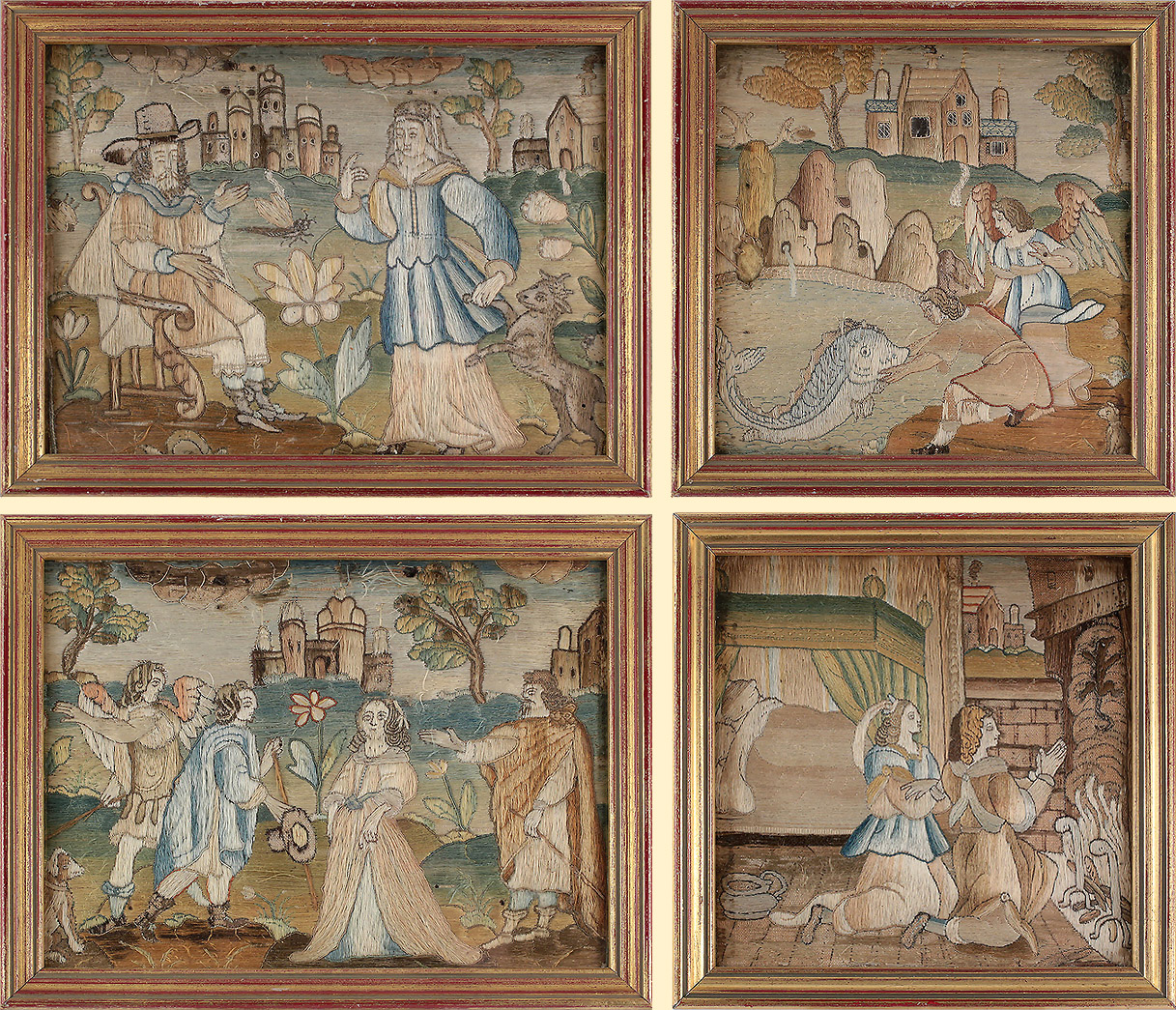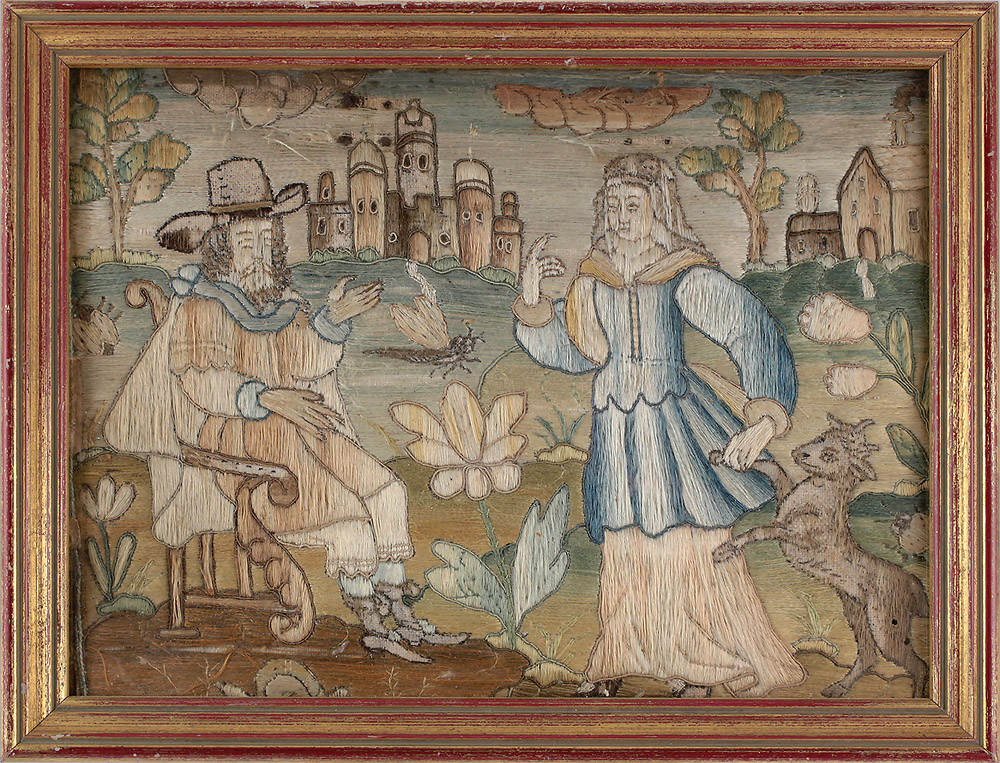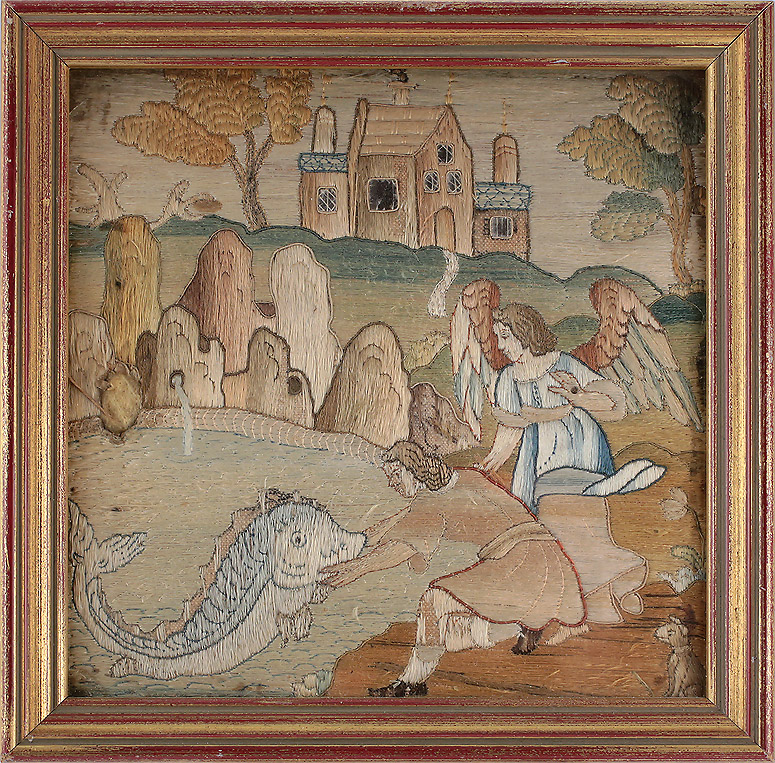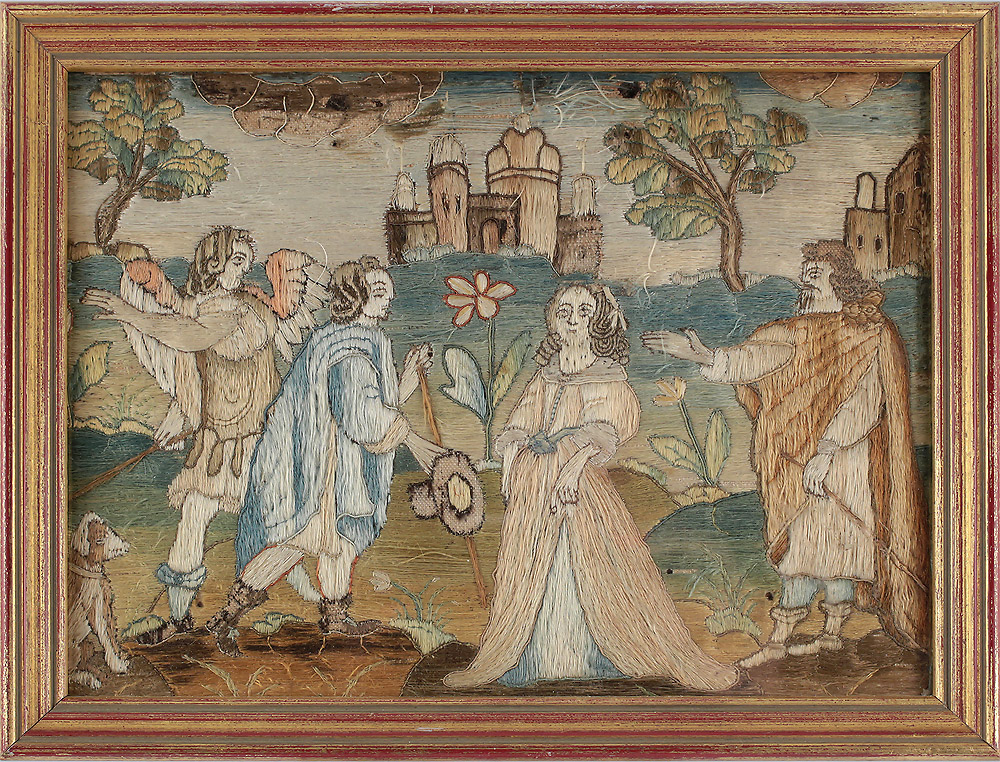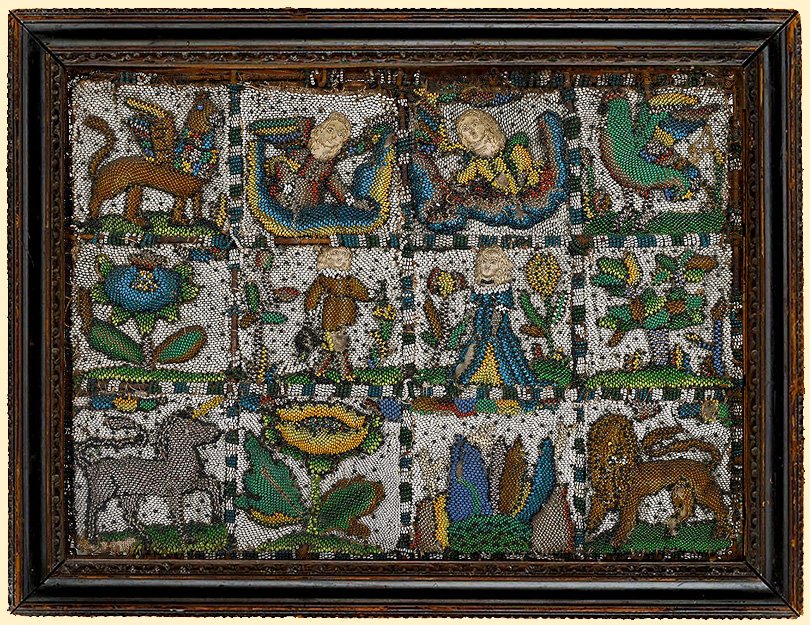When Tobias asked the angel where in Rages they should lodge,
Rafael then answered that he (Tobias) had a kinsman in Rages,
with a daughter named Sara, whom he should take as a wife.
Tobias has heard of Sara's seven husbands killed by the evil spirit and feared for his own life -
particularly as he was all remaining to care for his parents.
However Rafael allayed Tobias' fears. Rafael also assured the confidences well of both Raguel
(whom it seems was Tobias the Father's brother) and his daughter Sara.
Thus both Tobias and Rafael were received with joy.
And before the festive dinner, Tobias made this proposal :
"I will not eat nor drink here this day, unless thou first grant me my petition,
and promise to give me Sara thy daughter".
EMBROIDERY #4, The evil spirit is driven away
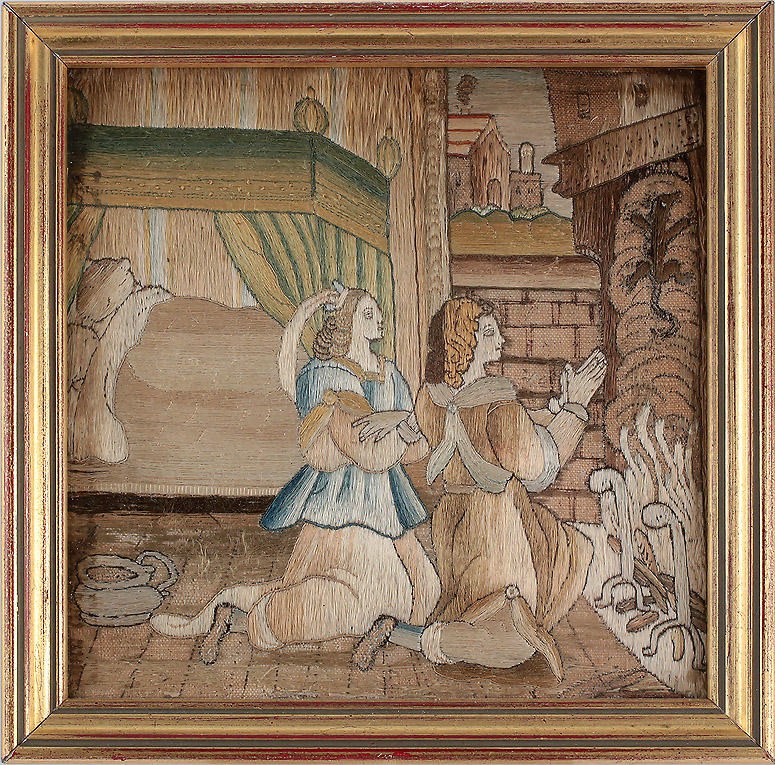
Believing God had regarded their many prayers, Sara and Tobias were wed.
1 And after they had supped, they broght in the young man to her.
2 And Tobias remembering the angel's word, took out of his bag part of the liver, and laid it upon burning coals.
3 Then the angel Raphael took the devil, and bound him in the desert of upper Egypt.
And they lived happily and prosperously ever after.
"and he saw his children's children to the fifth generation.
16 And after he had lived ninety-nine years in the fear of the Lord, with joy they buried him".
These depictions are only part of Tobias' story.
Included, but not illustrated, in this retelling must be
the healing of Tobit (Tobias the Father) :
Tobias took the gall of the monstrous fish back to his father,
anointed his eyes with it, began restoring his sight.
And Tobit - once again - could see his beloved and trusted son Tobias.
Also included must be a note regarding the small dog in Embroidery #3,
This small dog had accompanied Tobias and the angel Rafael for the entire journey.
And at the healing of Tobit's eyes, the small dog
"ran before, and coming as if he had brought the news,
shewed his joy by his fawning and wagging his tail"
The painting below entitled "Tobias and The Angel", Verrocchio, 1450-1500,
depicts this companion dog, but with rather a tiny fish.
It is said that the dog, the fish and Tobias' curl were possibly done by the young Leonardo da Vinci,
who was in Verrocchio's workshop c1470 - 1477.
(National Gallery of London)
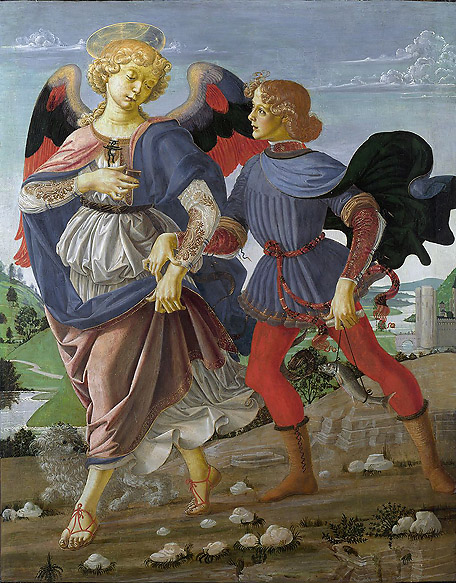
Footnotes :
The book of Tobias had not been included in the shorter Hebrew Canon.
However, Tobias (or Tobit) is included in the "Apocrypha" in the King James Bible.
(The "Apocrypha" are works, usually written of unknown authorship or of questionable origin).
Although their canonical validity was challenged in the 16th century by Protestants, the apocryphal books
were in fact translated as part of the King James Version of the Bible.
However, I am told (on good authority) the main reason for their exclusion from the King James Version was simply that
the publishers' feared that their inclusion might made the volume 'too large'!
Click below if you wish to read the entire "Tobias" text, from the Douay-Rheims Bible
https://biblescripture.net/Tobias.html
Biblical scenes from both Old and New Testaments were common motifs in the 17th century.
Kings and Holy Figures often appeared as Charles II, and also included angels,
castles, fruiting trees, oversized flowers, insects and fountains.
A writing box embroidered with the story of Rebecca offering water to Eliezer
(from a 1585 Marten de Vos engraving) resides in the National Gallery of Victoria, Australia
with the following comment
:"Among the most complex of seventeenth-century embroidered objects were caskets,
designed to hold precious objects such as jewellery, writing equipment, cosmetics and keepsakes".
|
